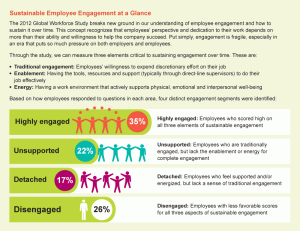by Charles Plant | Sep 26, 2012 | Leadership Development
 Getting ahead in business means thinking strategically. Easy to say but not so easy to do given that many people really don’t know the difference between strategy and tactics. So here goes, an attempt to explain the difference.
Getting ahead in business means thinking strategically. Easy to say but not so easy to do given that many people really don’t know the difference between strategy and tactics. So here goes, an attempt to explain the difference.
When you look in a dictionary (I checked online) it would say something like “A plan of action or policy designed to achieve a major or overall aim.” Not very clear is it? Anything can be called a strategy under that definition. That’s why there are marketing strategies, financial strategies, HR strategies and so on. All of them are designed to achieve an overall aim. If you define your overall aim as earning a profit then you could have a cost reduction strategy too. But are those actually strategies? Nope, to me they’re tactics.
Remember that getting ahead is about thinking strategically so you have to know what to be thinking about at a senior level and what not to be thinking about.
Strategy relates to how you meet customer needs.
Going back to basics, a business is about finding and meeting a set of customer needs. If you want to be more profitable or more successful than you are now then you’ll have to be better meeting those needs than any of your competitors. So strategy first off relates directly as to how you meet customer needs better than your competitors.
When you talk about customer needs, there are only three dimensions within which you can have a conversation. Customers needs can be summarized in three big buckets. They are looking for a certain quality level, at a certain cost and with a certain speed of service. How your product or service fits in those three dimensions of Quality, Cost and Speed is how you’ll be perceived by customers and thus how you’ll stack up against competition.
Customer needs can be defined by Quality, Cost, and Speed
You can compare any two businesses by looking at those three dimensions. Look at MacDonalds versus The Keg for instance. They both serve beef and fries don’t they? But MacDonalds has lower quality, lower cost and faster service. They are strategically differentiated. The Keg’s strategy is to earn more money by selling higher quality at a higher cost with slower service. What matters most to both of these restaurants is how you perceive these three dimensions of their offerings.
To change or improve or fix your business, what you have to do is change, improve or fix one of those three elements of Quality, Cost, and Speed. It all comes back to that.
Thinking Strategically
Thinking Strategically means thinking about and spending time and money on issues that directly relate to Quality Cost and Speed. Furthermore, it means thinking about things that have a big effect on these three items.
by Charles Plant | Sep 21, 2012 | Research
 What? A second blog today? I actually wrote the last one on Wednesday but got distracted and forgot to promote it until today. So much for focus.
What? A second blog today? I actually wrote the last one on Wednesday but got distracted and forgot to promote it until today. So much for focus.
You might have noticed that women are taking over the world. From university enrolment to the professions and now to politics, women are coming to dominate men in almost every field. You might have wondered why. (Or you might not have, but I’ll tell you why anyway.)
It’s because of focus. Men don’t focus as well as women. In order to advance mankind’s understanding of the human condition I have penned this blog so here it is, 5 reasons why men can’t focus.
- The Hunter Instinct – Men are evolutionarily designed to be hunters. From the earliest days of mankind, men were responsible for killing game. To do that requires that men be highly aware of the smallest movement in case it means there is something out there to kill and eat. Nowadays when men are in meetings, they still carry this evolutionary trait and are easily distracted by the smallest things.
- Superior Intelligence – Men are the more intelligent of the sexes as they have so many important things to think about. Who can focus on doing dishes or putting the toilet seat down whene there is world hunger to solve or hockey games to think about? Perhaps men will become more focussed this year as a result of the hockey lockout.
- Emotional Attunement – Men are so emotionally attuned that it hurts. They notice each and every change in emotions, especially in women. With such emotional attunement men are constantly distracted by even the slightest display of emotion. In order to focus, they have had to block these messages out and as a result, they have blocked them so successfully that many men deny having any emotions whatsoever.
- Sex – Yes, sex. Did you know that studies have shown that men think of sex on an average, every 8 seconds. If you’re thinking about sex that often, how could you focus any anything else effectively?
by Charles Plant | Sep 18, 2012 | Emotional Intelligence, Leadership Development
 As a typical guy, I’ve always wondered why women obsess so much about their shoes. After all, they’re just shoes. In particular I used to wonder why women spend so much time shopping for shoes and so little time shopping for cars for instance. I’ve seen women agonize over shoes for the longest time and make a decision to buy a car without much angst at all. A guy on the other hand will spend all sorts of time researching and discussing cars before he’ll make a purchase but he’ll typically just buy the same type of shoes he bought the last time.
As a typical guy, I’ve always wondered why women obsess so much about their shoes. After all, they’re just shoes. In particular I used to wonder why women spend so much time shopping for shoes and so little time shopping for cars for instance. I’ve seen women agonize over shoes for the longest time and make a decision to buy a car without much angst at all. A guy on the other hand will spend all sorts of time researching and discussing cars before he’ll make a purchase but he’ll typically just buy the same type of shoes he bought the last time.
I used to think that this difference between the sexes was because women just didn’t understand the concept of materiality. After all, a car is so much more expensive that a pair of shoes. Shouldn’t you spend much more time on a car decision than on a shoe decision? Now that I am working on my emotional intelligence I realize that it is exactly because of materiality that women spend so much time on a shoe decision and men, so much on cars.
So, you’re probably wondering what is so special about this concept of materiality. This concept is a prevalent one professionally but it has not always crept successfully into the hands of the people working in businesses. This may be due to the fact that ancient proverbs seem to go against the concept of materiality. In fact an old Scottish proverb advises people to “Take care of your pennies and your dollars will take care of themselves.” This proverb is in fact ass-backward. What you should be doing is minding your dollars and paying no attention to your pennies.
Something is material if it matters. Matters to what? Well it could be to you, your boss, the customer. The point is if you want to spend your time wisely at work and not waste it, you should only spend time on things that are material, not on things that are immaterial. Don’t waste your time on stuff that doesn’t matter and if you do this one thing well, you’ll find that you’re almost never scrambling for time.
Back to shoe shopping. Why would anyone spend more time shopping for shoes than shopping for a car? Well it all comes down to materiality but with a twist. Materiality isn’t always just about the money. Sometimes, the emotional impact matters more than the monetary one. Some people really care about how they look in pair of shoes and couldn’t care less about what their car says about them. Others have a much stronger emotional connection to a car than to shoes.
What is material to one person, isn’t material to another. But the same principle holds at work. Spend your time only on stuff that matters, stuff that is material to your success and the company’s success.
by Charles Plant | Sep 17, 2012 | Leaders
 Today is the first anniversary of the day that Occupy Wall Street took over Zuccotti Park and the Occupy Movement was born. As a movement it began over a growing disillusionment about income inequality and corporate greed. While it dominated the world’s attention for many weeks, its impact was short lived. Eventually it lost its momentum, its ability to organize, and was broken up.
Today is the first anniversary of the day that Occupy Wall Street took over Zuccotti Park and the Occupy Movement was born. As a movement it began over a growing disillusionment about income inequality and corporate greed. While it dominated the world’s attention for many weeks, its impact was short lived. Eventually it lost its momentum, its ability to organize, and was broken up.
What doomed the movement was its lack of leadership. Not only did a credible leader not emerge but in fact the movement resisted any attempts by individuals who wanted to lead it. “Without leaders or specific demands, what started as a protest against income inequality turned into an amorphous protest against everything wrong with the world.” (Washington Times”)
Movements and groups need leaders. Where would the civil rights movement have been without Martin Luther King, the feminist movement without Germaine Greer?
Without a leader, there was no one to articulate a vision. Without a leader there was no one to focus communications. And without a leader, there was no one left to motivate followers when the parks had been emptied.
Income inequality still exists. Corporate greed still exists. The disenfranchised still need a voice. The movement needs leadership.
by Charles Plant | Sep 11, 2012 | Literature Review
Are you really engaged in your job? Chances are good that you aren’t. Well, Towers Watson just released Their 2012 Global Workforce Study. According to the study, 65% of you are not highly engaged at work. That would make employee engagement one of the biggest problems for companies these days.
“For optimal engagement in the modern workplace, employers must create a combination of discretionary effort (the willingness to work extra hard), enablement (the capability to excel), and energy (the capacity to maintain efforts over time). Old methods focused solely on discretionary effort, but any organization that wants to yield a significant performance advantage must combine all three elements to forge sustainable engagement.”
While this is a bad thing for you and probably for your employer, it might not be a bad thing for the economy. According to another source, a blog on HBR:
“What do 70% of successful entrepreneurs have in common? They all incubated their business ideas while employed by someone else. Indeed, most people start their own companies — or go freelance — in order to stop working for others. Why? Because most managers are simply unbearable. Year after year, Gallup reports that most employees are unhappy at work, and that the number one reason for dissatisfaction is their boss.”
So if you’re not engaged, what are you doing with your time? If it’s because your manager is unbearable then get moving. Find another job or better yet, create one yourself and free yourself from the tyranny of bad bosses.
by Charles Plant | Sep 5, 2012 | Leaders
 I bet you know who invented the telephone. How about the light bulb? If you’re Canadian, you know who invented insulin because that may be the last time something that useful was invented here. (I’m sure I’ll get hate mail for that comment.) How about Email? Do you know who invented it? I must admit that I didn’t know. Such a shame since it’s reach is worldwide and the frequency of its use surely would qualify it as a pandemic.
I bet you know who invented the telephone. How about the light bulb? If you’re Canadian, you know who invented insulin because that may be the last time something that useful was invented here. (I’m sure I’ll get hate mail for that comment.) How about Email? Do you know who invented it? I must admit that I didn’t know. Such a shame since it’s reach is worldwide and the frequency of its use surely would qualify it as a pandemic.
Here are some stats on its use from the Radacati Group
- 107 trillion – The number of emails sent on the Internet in 2010.
- 294 billion – Average number of email messages per day.
- 1.88 billion – The number of email users worldwide.
- 2.9 billion – The number of email accounts worldwide.
So there are all sorts of claims as to who actually invented it. The answer depends on how you define email.
Tom Van Vleck
The first attempt at something like email was back in the mid 60s on MIT’s Compatible Time-Sharing System (CTSS). Tom Van Vleck developed a “mail” command that let users send electronic messages to other users of the same system. No networking and no mail system but it was a useful start.
Ray Tomlinson
In 1971, Ray Tomlinson built a messaging system atop ARPAnet, the research network funded by the US Department of Defense that would eventually give rise to the internet. Ray’s system sent electronic messages between machines. Messages now, but no application. It was recognized in 1977 that no attempt was being made to emulate a full-scale, inter-organizational mail system.
V.A. Shiva Ayyadurai
Then in 1978 V.A. Shiva Ayyadurai,a 14-year-old working in Newark, NJ built and copyrighted a software program called “email”. This was the first program to structure electronic communications in a way that mimicked paper mail with “inboxes” and “outboxes” and “address books.” Ayyadurai who is now a lectureer at MIT was at the tender age of 14, working at the University of Medical and Dentistry of New Jersey.
You can check out his claim at www.inventorofemail.com/
And yes, that invention that you probably hate but can’t live without was invented by a 14 year old.
 Getting ahead in business means thinking strategically. Easy to say but not so easy to do given that many people really don’t know the difference between strategy and tactics. So here goes, an attempt to explain the difference.
Getting ahead in business means thinking strategically. Easy to say but not so easy to do given that many people really don’t know the difference between strategy and tactics. So here goes, an attempt to explain the difference.




